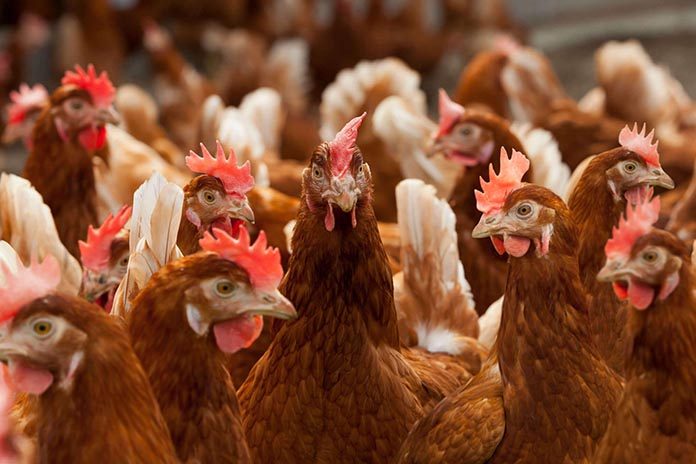
A significant proportion of human illnesses caused by Salmonella are linked to the consumption of contaminated eggs. In response, substantial government and private industry resources are committed to comprehensive Salmonella testing and risk reduction programs for commercial egg-laying flocks. Environmental conditions in poultry housing facilities directly affect opportunities for Salmonella introduction, transmission, and persistence. Many important environmental influences are determined by the various housing systems used in the modern commercial egg industry. A thorough assessment of the public health implications of different housing systems for egg-laying flocks depends on understanding both how they influence the environmental survival and spread of Salmonella, and how they affect the course and outcome of infection in hens.
In a large field study, environmental swabs and egg shells pools were collected from commercial laying hens housed in conventional cages, enriched colony cages, or cage-free aviaries. These samples were tested for the numbers of total aerobes and coliforms, and for the presence of Salmonella. Environmental aerobe and coliform counts were highest for aviary drag swabs (7.5 and 4.0 log cfu/ml, respectively) and enriched colony cage scratch pad swabs (6.8 and 3.8 log cfu/ml). Aviary floor and system wire shell pools had the greatest levels of aerobe contamination in egg-shell pools (4.9 and 4.1 log cfu/ml). Hens from all housing systems were shedding Salmonella spp. (89-100% of manure belt scraper blade swabs). There were no significant differences between the housing systems in Salmonella detection from either environmental samples or egg-shells. These results indicate that each housing system has unique microbiological risk factors and associated management challenges for pathogen control.
In a series of experimental infection studies, laying hens housed in either conventional cages or enriched colony cages were orally inoculated with Salmonella Enteritidis (SE). Significantly more hens in conventional cages shed SE in their feces during the first 4 weeks post- inoculation than did hens in enriched colony cages (43% vs. 29%) in 1 study, but the frequency of horizontal transmission of infection was not affected by housing type in a 2nd study. Likewise, although the frequency of SE invasion to internal organs in a 3rd study was significantly greater among hens in conventional cages than in enriched colony cages (93% vs. 53% of spleens; 25% vs. 10% of ovaries), hens from the 2 housing systems laid internally contaminated eggs at similar frequencies (3.6 – 4.0%) in the 4th study. Accordingly, although parameters, which differ between conventional and enriched cages (including stocking density and behavioral restriction) may affect some aspects of susceptibility to SE colonization, this influence does not extend to all aspects of infection or product contamination.
From the Proceedings of the 87th Northeastern Conference on Avian Diseases.
















